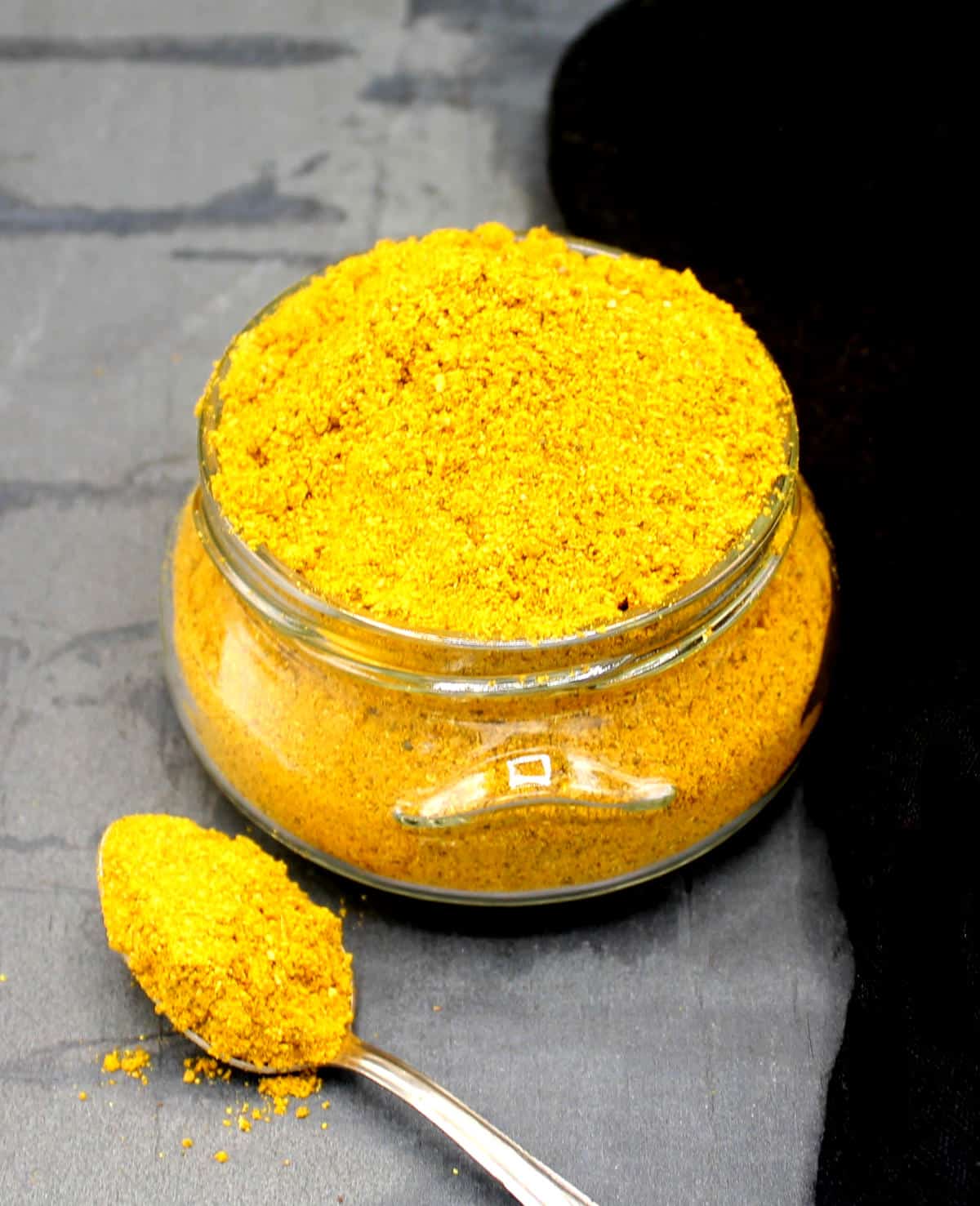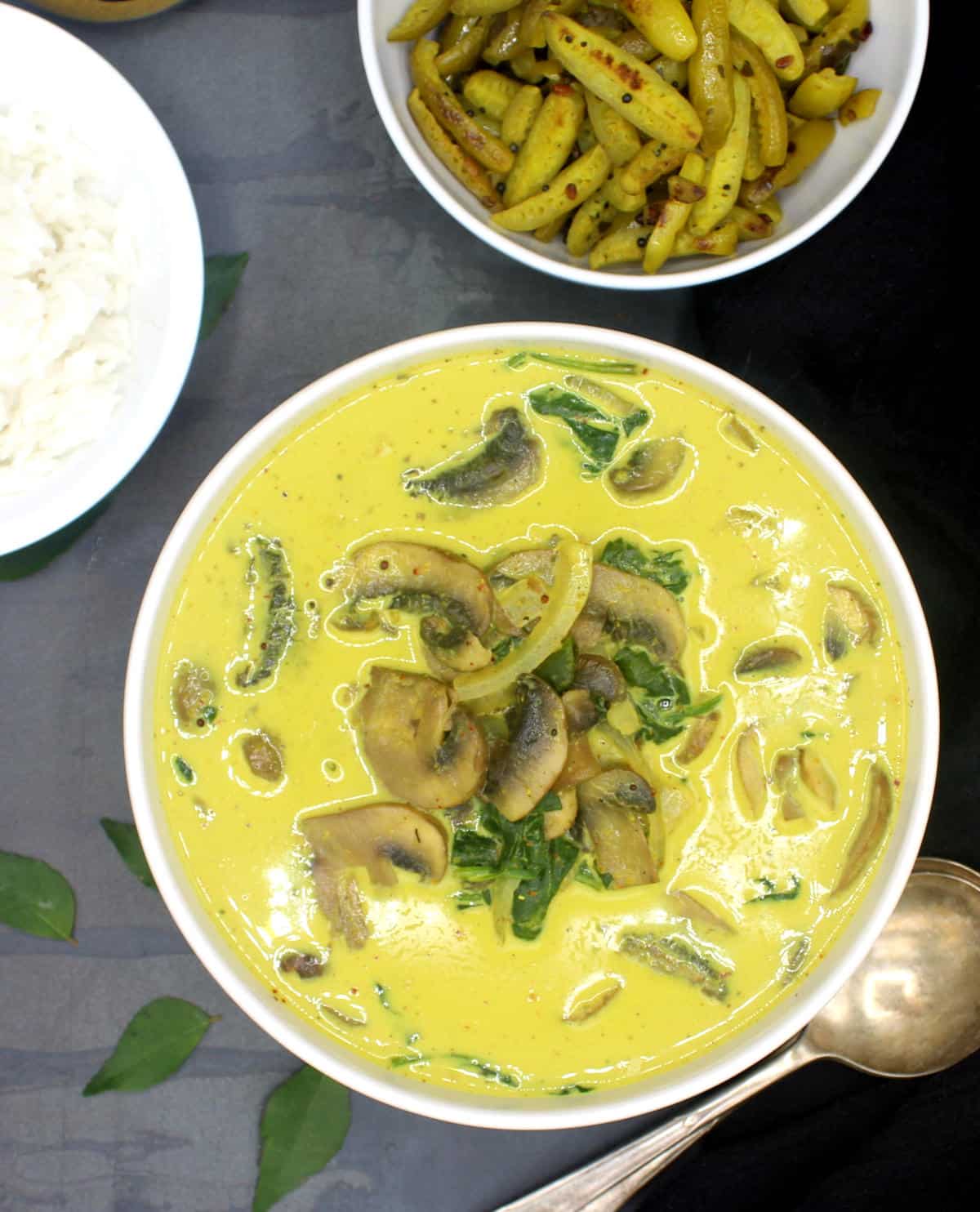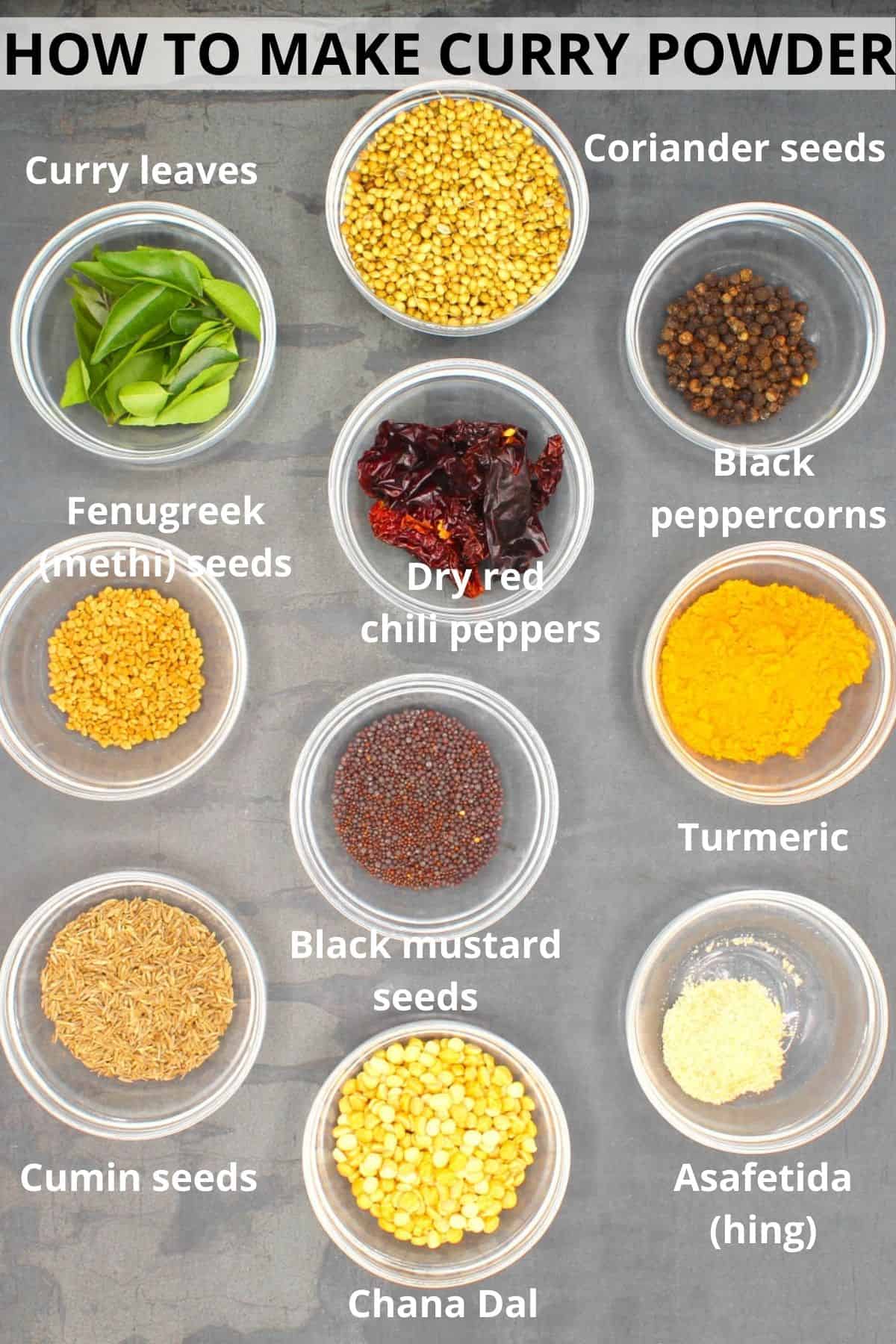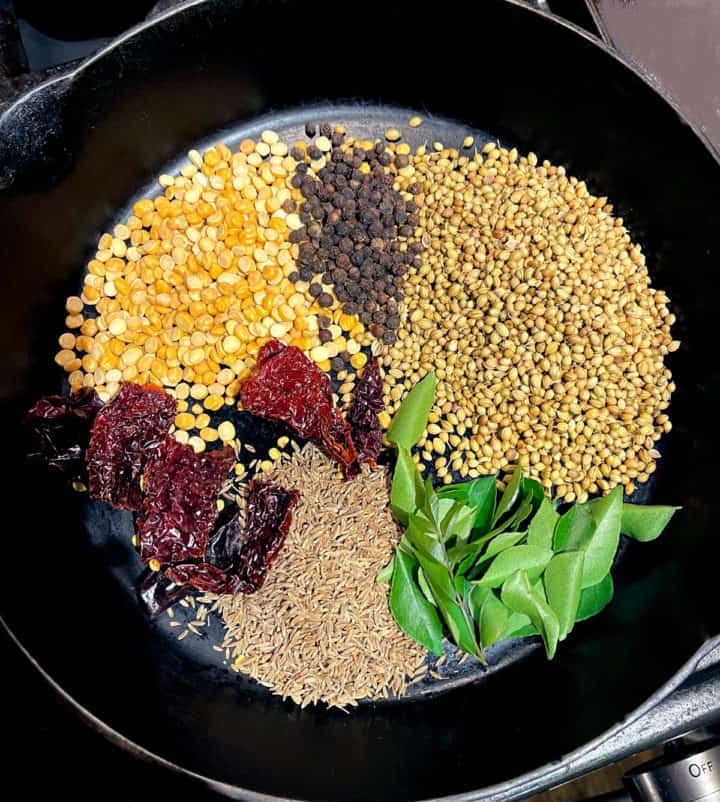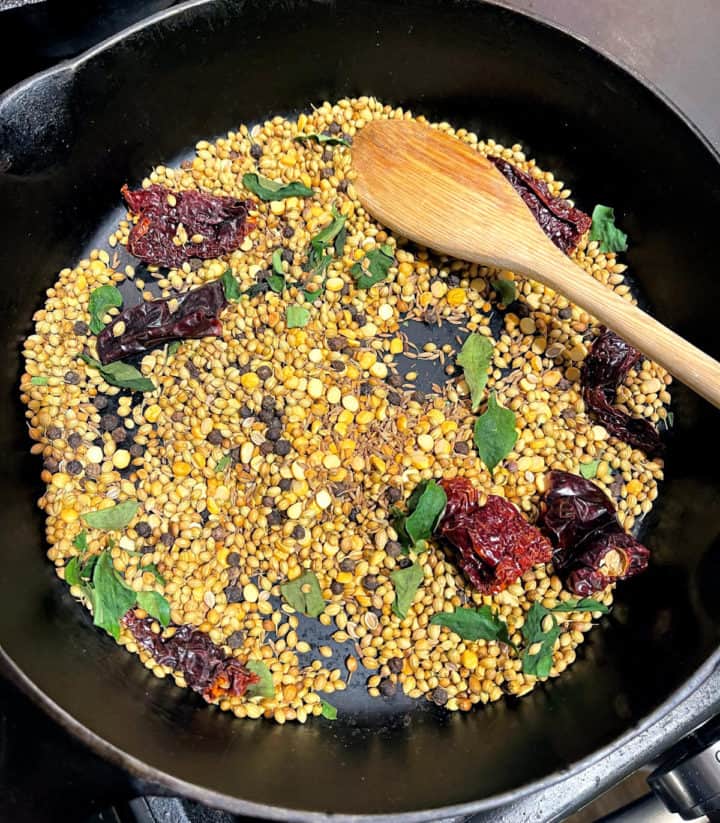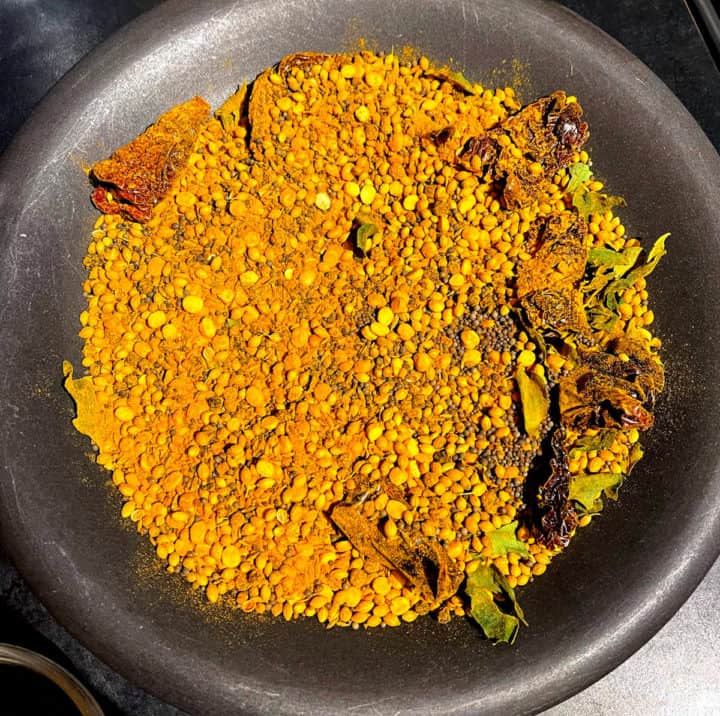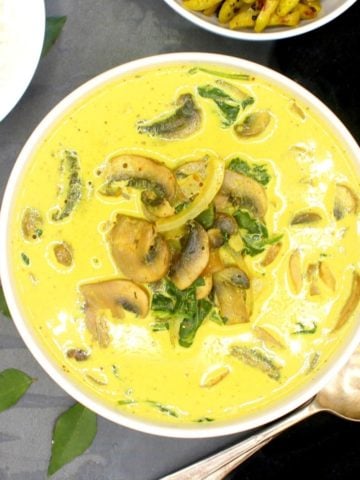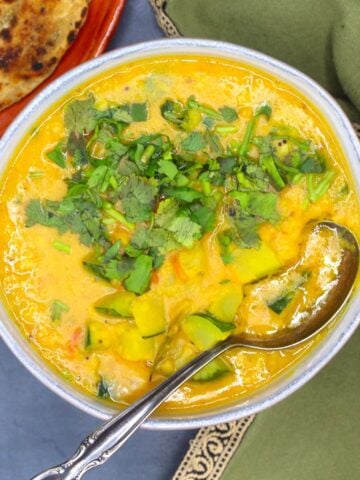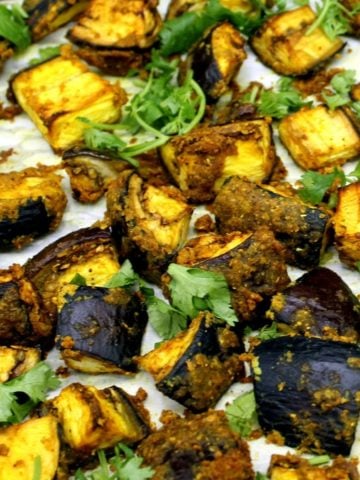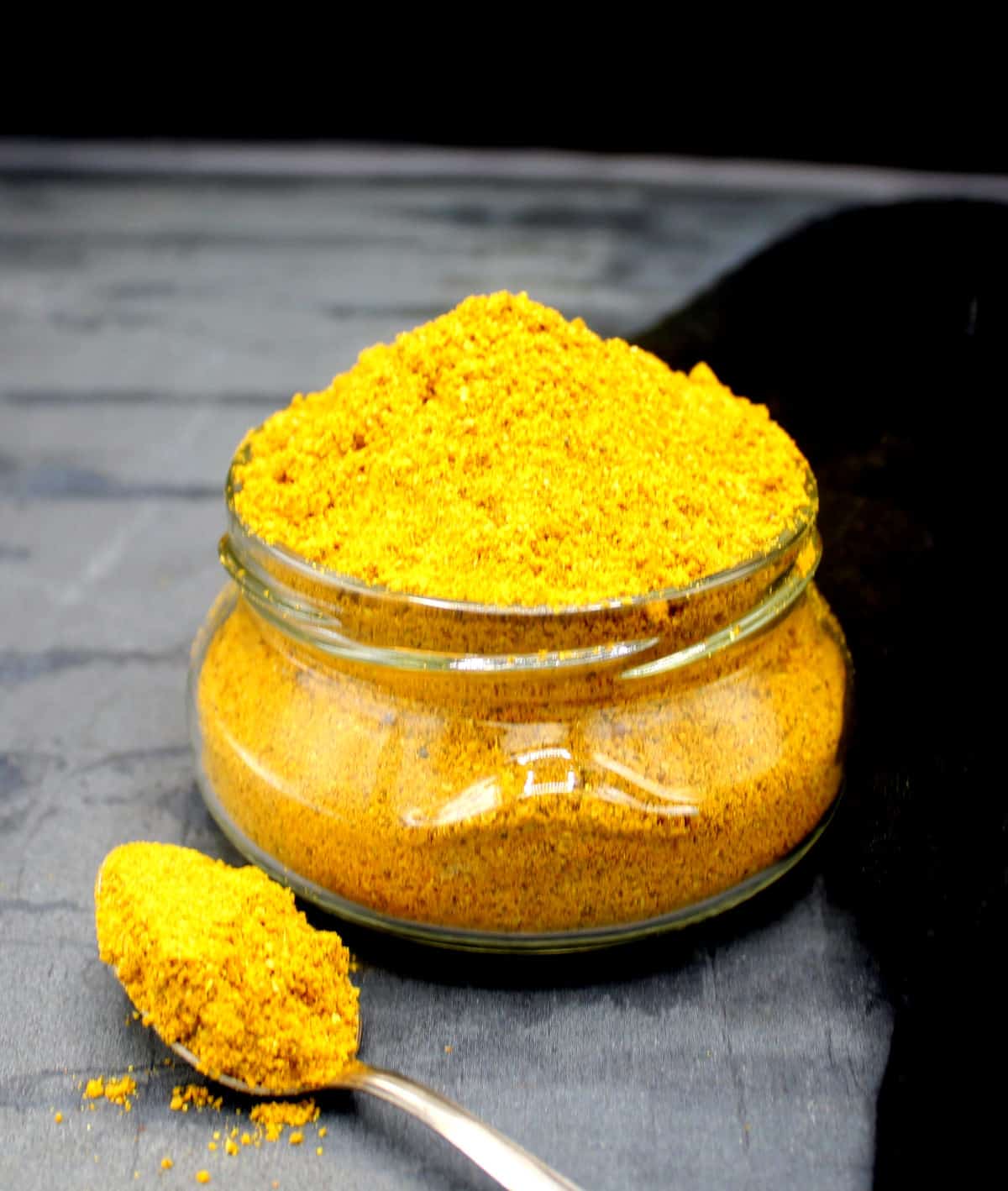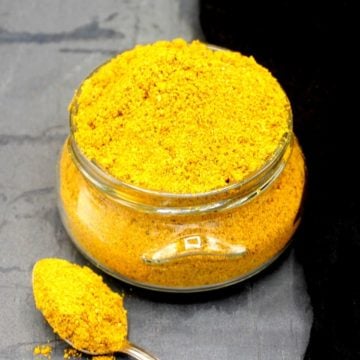Sharing with you a homemade curry powder that’s full of flavor and as authentic as possible has been on my to-do list for a while now. A big reason for this is I’m tired of seeing recipes for curry powder blends that look just like garam masala. Apparently, in the confusing discussion over where curry powder comes from and what it should be used for, this spice blend–with foggy origins but a bold flavor profile– has lost its way.
What is curry?
“Curry” is a suffix added to a number of spicy Indian dishes that can be either dry or saucy. The word can be loaded: it has been used in racial slurs against Indians abroad. It also tends to offend some Indian cooks who claim it is a colonial invention: a catchall used by Portuguese and British colonizers to describe any spicy, gravied Indian dish, and one that fails to capture the complexity of Indian cuisine. There is some truth in all of that but for better or for worse the word has become firmly embedded in the culinary lexicon and is commonly used within and outside India to describe saucy, spicy dishes. It might also not be fair to blame the generalization entirely on the colonizers. In the south Indian state of Tamil Nadu the word “kari” has long been a suffix for savory meat and vegetable side dishes. These can include both gravied and dry dishes, from a saucy kozhi kari or chicken curry to a stir-fried vendakka kari or okra curry. The Portuguese and the British, likely relieved by the simplicity of the word “kari” in a land where words like “kuzhambu” and “kathirikkai” roll off local tongues with ease, readily adopted it, anglicized the spelling to “curry,” and – with an arrogance typical at the time – used it to describe any spicy dish from anywhere in India. Curry became a global food when Indian laborors, ferried by the British to other colonies, went on to create versions of it in foreign lands like Malaysia, South Africa, Nigeria, Mauritius, Jamaica and Trinidad, among many others. Whatever the origins of a curry, or the word, what really matters today when it comes to eating it is that it is usually delicious and especially good with rice or an Indian flatbread.
What is curry powder?
Curry powder is a strikingly yellow, all-purpose blend of spices that can be used to flavor Indian-style stews (called curries) and vegetable stir-fries. It has a very distinct flavor profile, quite unlike that of garam masala, the other popular Indian-style spice blend, made with warming spices like peppercorns, cinnamon and mace. Curry powder has a mix of some warming ingredients (like black peppercorns and red chili peppers) and some cooling ingredients (like fenugreek and turmeric), but it doesn’t, and shouldn’t, have other spices you’d typically find in garam masala like cardamom, cloves and mace. Like curry, curry powder has its beginnings in colonial India. At the time, cooks in India blended up their own unique spice mixes. According to some stories, savvy Indian traders created curry powder for Britons returning home who were eager to bring with them a taste of their beloved Indian food. Others say Indian cooks in Britain dreamed it up to recreate the flavors of India in their restaurants. Because the British had tamer tastebuds than Indians did, curry powder was milder and less spicy than garam masala. It is also highly likely that curry powder was inspired – or created – by south Indian cooks, because its ingredients very closely resemble those in south Indian spice blends like sambar powder and rasam powder. In fact, its flavor profile is best suited to foods with a south Indian flair. There is a spicier version of curry powder, called “Madras curry powder,” (Madras being the old name of Chennai, the largest city in and capital of Tamil Nadu), which has more red chili pepper added to it. Just as they do with using the word “curry,” some Indian cooks turn their noses up at curry powder because it lacks a clear Indian pedigree. But I have never been dogmatic when it comes to good food and curry powder is not only a spice blend I always have in my kitchen, it is one of my go-tos when I want a hearty and tasty Indian curry in a rush. Check to get new recipe updates by email.
Mix it up and keep it in your pantry alongside a jar of garam masala and you’ll always have two great reasons to cook Indian food.
Tips for cooking with curry powder
Curry powder is not a substitute for garam masala. Here’s a simple guide: if a curry you are making has a north Indian flavor profile (foods like chana masala, vegan paneer butter masala or vegan palak paneer) go with garam masala. If it has a south Indian flavor profile like this baked one-pot chickpea curry with cauliflower and potatoes or this vegetable curry, or uses ingredients like coconut, curry leaves and tamarind, use curry powder. You can add curry powder to stir-fried potatoes or eggplant and dals as well, and it will be wonderful. Both curry powder and garam masala are already cooked because you roast the spices beforehand. So unless a recipe specifically states otherwise, add them to a dish toward the end of cooking. . As to how much curry powder (or garam masala or panch phoron or any spice blend) you should use in a recipe, a tablespoon or two is a good rule of thumb to follow. While I always specify how much of a spice blend to use in any recipe, don’t be afraid to add more – or less – after tasting the dish. Spice blends like curry powder don’t just add flavor, though. They pack within them immense health benefits that can aid you in a journey toward better health. For that reason, in addition to the deliciousness they bring to food, it’s a good idea to include them in your diet.
How to make curry powder
Recipes to make with curry powder
Recipe card
